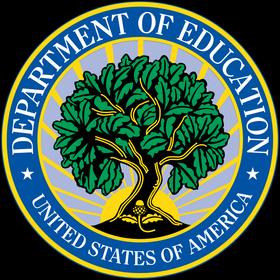For the 2025 school year, there are 5 public elementary schools serving 639 students in Dekalb County, MO.
The top ranked public elementary schools in Dekalb County, MO are Maysville Elementary School, Osborn Elementary School and Stewartsville Elementary School. Overall testing rank is based on a school's combined math and reading proficiency test score ranking.
Dekalb County, MO public elementary schools have an average math proficiency score of 43% (versus the Missouri public elementary school average of 40%), and reading proficiency score of 51% (versus the 42% statewide average). Elementary schools in Dekalb County have an average ranking of 9/10, which is in the top 20% of Missouri public elementary schools.
Minority enrollment is 5% of the student body (majority Hispanic), which is less than the Missouri public elementary school average of 32% (majority Black).
Best Public Elementary Schools in Dekalb County (2025)
School
(Math and Reading Proficiency)
(Math and Reading Proficiency)
Location
Grades
Students
Rank: #11.
Maysville Elementary School
(Math: 45-49% | Reading: 55-59%)
Rank:
Rank:
9/
Top 20%10
601 W Main
Maysville, MO 64469
(816) 449-2284
Maysville, MO 64469
(816) 449-2284
Grades: PK-6
| 273 students
Rank: #22.
Osborn Elementary School
(Math: 30-39% | Reading: 50-59%)
Rank:
Rank:
7/
Top 50%10
275 Clinton Ave
Osborn, MO 64474
(816) 675-2217
Osborn, MO 64474
(816) 675-2217
Grades: K-6
| 65 students
Rank: #33.
Stewartsville Elementary School
(Math: 35-39% | Reading: 45-49%)
Rank:
Rank:
6/
Top 50%10
902 Buchanan St
Stewartsville, MO 64490
(816) 669-3258
Stewartsville, MO 64490
(816) 669-3258
Grades: PK-6
| 147 students
Rank: #44.
Union Star High School
(Math: 50-59% | Reading: 30-39%)
Rank:
Rank:
6/
Top 50%10
6132 Nw State Rte Z
Union Star, MO 64494
(816) 593-2294
Union Star, MO 64494
(816) 593-2294
Grades: 6-12
| 80 students
Rank: #55.
Union Star Elementary School
(Math: 30-39% | Reading: 40-49%)
Rank:
Rank:
5/
Bottom 50%10
6132 Nw State Rte Z
Union Star, MO 64494
(816) 593-2294
Union Star, MO 64494
(816) 593-2294
Grades: K-5
| 74 students
Frequently Asked Questions
What are the top ranked public elementary schools in Dekalb County, MO?
The top ranked public elementary schools in Dekalb County, MO include Maysville Elementary School, Osborn Elementary School and Stewartsville Elementary School.
How many public elementary schools are located in Dekalb County?
5 public elementary schools are located in Dekalb County.
What is the racial composition of students in Dekalb County?
Dekalb County public elementary schools minority enrollment is 5% of the student body (majority Hispanic), which is less than the Missouri public elementary schools average of 32% (majority Black).
Which public elementary schools in Dekalb County are often viewed compared to one another?
Popular comparisons of public elementary schools in Dekalb County include: Maysville Elementary School vs. Stewartsville Elementary School, Maysville Elementary School vs. Union Star Elementary School, Stewartsville Elementary School vs. Maysville Elementary School
Recent Articles

Sexual Harassment at Age 6: The Tale of a First Grade Suspension
A six-year old in Aurora, Colorado, was suspended after singing an LMFAO song to a little girl in his class and reportedly “shaking his booty.” We look at the case and the sexual harassment problem in public schools today.

How Scaffolding Could Change the Way Your Child Learns
This article explores the concept of instructional scaffolding, a teaching method that enhances learning by breaking down complex tasks into manageable parts. It highlights how scaffolding supports students in developing critical thinking skills and becoming more independent learners. The article discusses the benefits of scaffolding, including improved engagement and reduced anxiety, and provides strategies for its implementation across various educational levels.

February 05, 2025
Understanding the U.S. Department of Education: Structure, Impact, and EvolutionWe explore how the Department of Education shapes American education, from its cabinet-level leadership to its impact on millions of students, written for general audiences seeking clarity on this vital institution.
